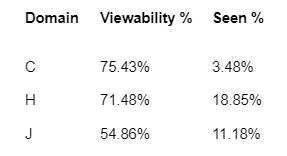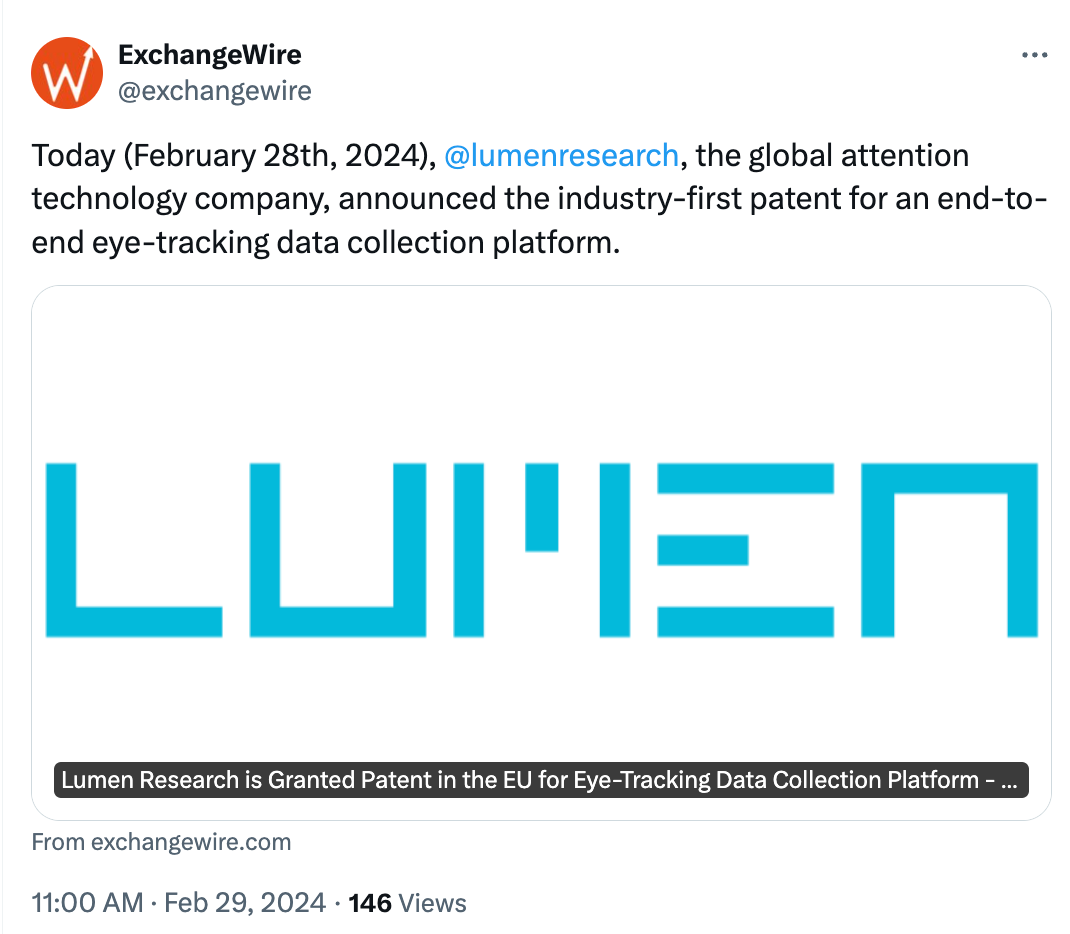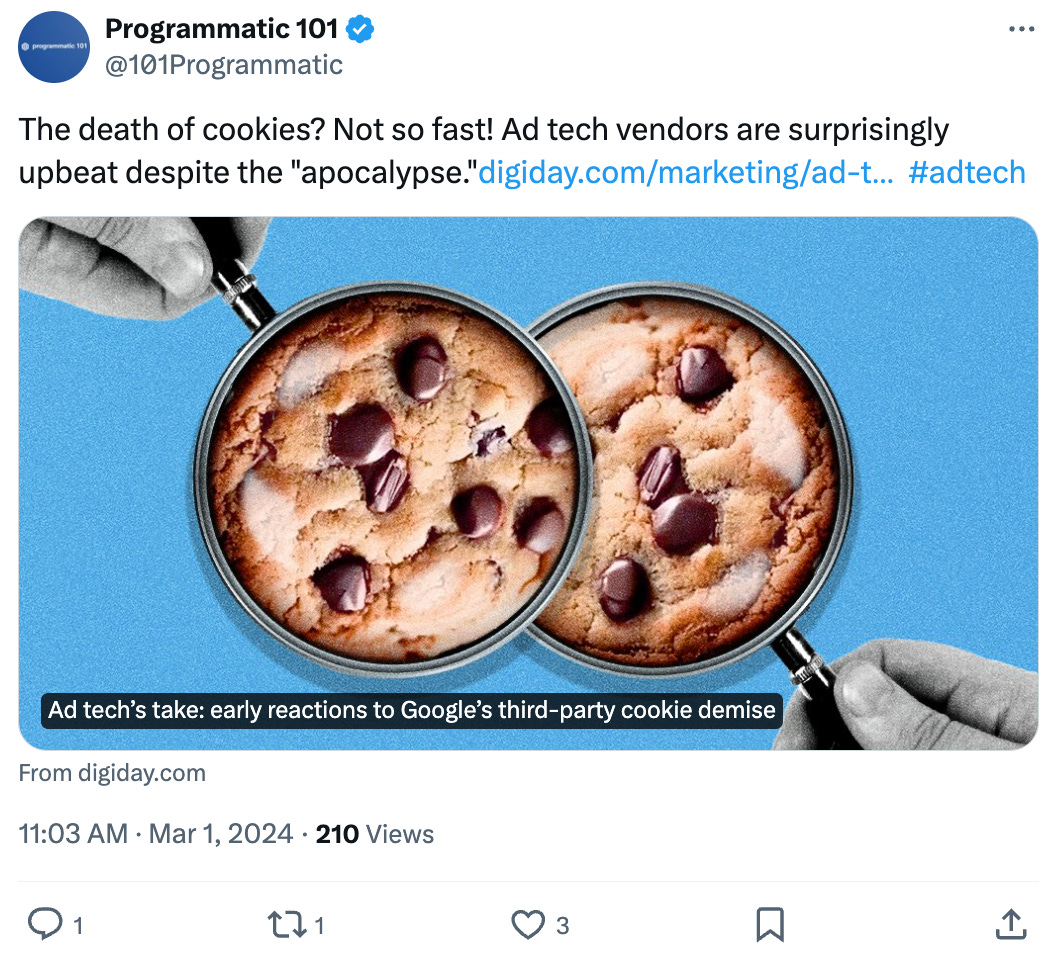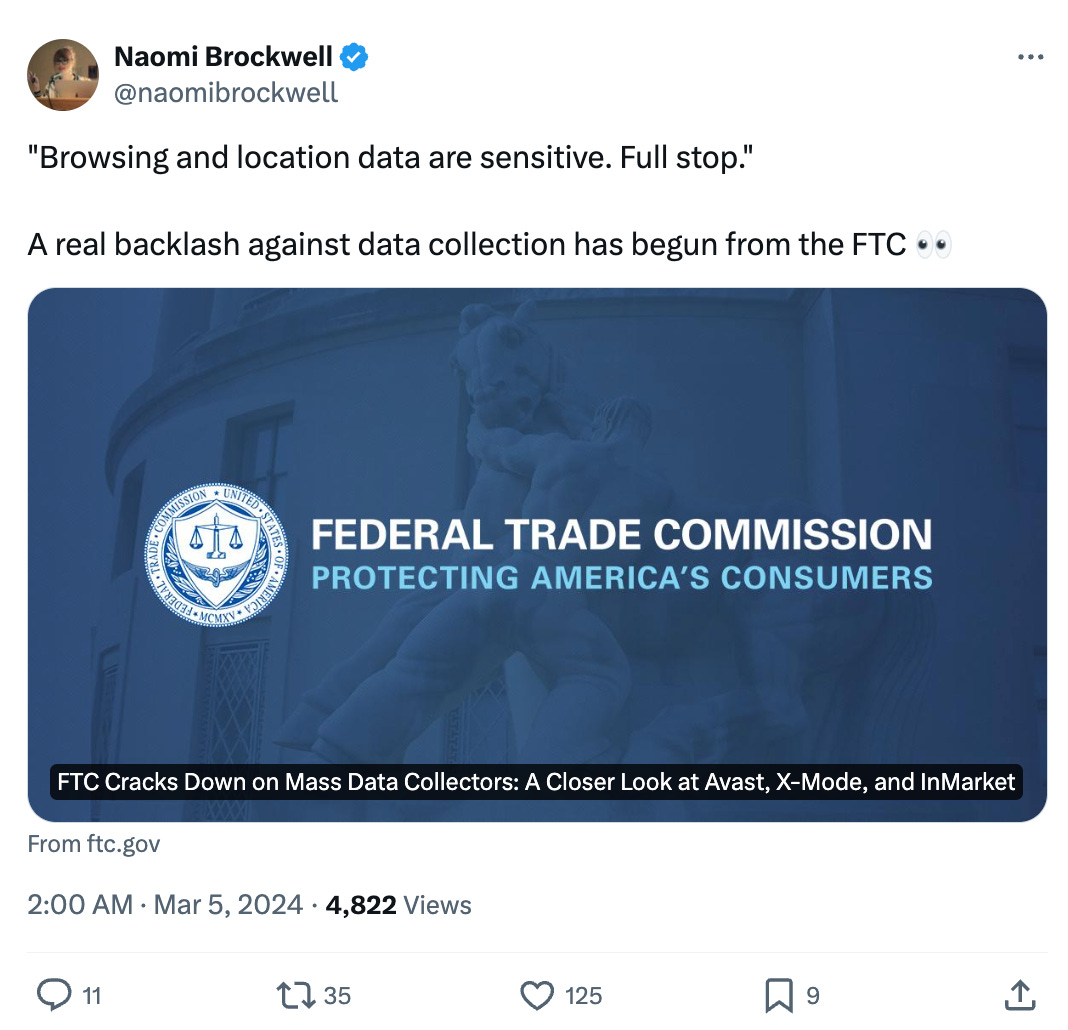#2 - Attention Weekly
Four things that caught our eye this week in the world of digital advertising attention
Welcome back! This is our second edition of attention weekly and this week we are covering how a viewed ad does not equal a seen ad, Lumens patented approach to collecting attention data, how privacy sandbox is progressing and how the FTC is stamping down on data use. Grab a coffee and spend the next 5 minutes getting up to speed on the week.
1 - Viewable and Seen are not the same thing
There is a common misconception that when an online advert is deemed viewable it has been actually been seen by the end user, this is not the case, in fact ads deemed “viewable” by verification businesses like IAS, DoubleVerify & Moat are ads that have the opportunity to be seen because 50% of the ad is on screen for 2 seconds or more.
This is a known limitation & recently many verification companies have expanded their feature set to include attention as a metric. As the name suggests this counts not just when an ad has the opportunity to be seen (it’s viewable) but also when the end user actually looks at the ad & gives it their attention.
This sounds great, but we imagine at this point you’re probably asking yourself whether viewability and attention are closely correlated? Well wonder no longer, early research suggests that there is little correlation, indeed Impact’s internal tests revealed that some configurations of domain & creative get low levels of viewability, but significantly higher than average levels of attention.
See below for three domains we have been testing and the difference between viewable and seen:
This means that some sites that have very low viewable CPMs (vCPMs) actually have higher than average Seen CPMs (sCPMs). Given most advertisers care about their ads actually being seen as opposed to just having the opportunity to be seen, optimizing towards a low vCPM isn’t necessarily optimal.
So in a nutshell viewable does not equal seen & if you’ve not done so already, now is the time to upgrade your measurement to include attention & work with partners that can optimize towards this goal, or better yet work with Impact who only charge clients when their ads are actually seen.
2 - Attention Vendor Lumen Granted Patent For Data Collection Platform
Impact Media partner Lumen has recently been granted patents in Europe for the data collection platform:
This is important because the data from this platform is used to power the predictive technologies that power our products. If you want to look at the patents in detail you can view them here.
Did you know that the PWC-validated Predictive Attention Model Impact Media uses to measure and optimize campaigns is the only attention model validated by an independent third-party? This gives you the confidence in the quality of the tools we use and confidence that you’re only paying when your ads are seen, not just when they are viewable.
3 - Testing the Sandbox
After years of discussions and delays, the last six months have been busy ones for Google’s privacy sandbox, the APIs became stable in Q4 2023 and AdTech began testing two months ago after Google killed off Cookies for 1% of Chrome users & provided independent businesses with funds to help cover the costs of testing.
Whilst Impact Media is very optimistic about the potential provided by privacy preserving technologies in advertising, the prevailing sentiment in the industry over the past 18 months has been quite negative so it was interesting to see in a recent Digiday article that many businesses are as upbeat as we are about the future:
Publicly listed exchanges like Magnite & PubMatic are both deeply involved in testing & whilst Magnite are going all in on testing PubMatic are taking a more cautious approach and recently highlighted that 80% of their inventory is available with alternatives to cookies.
Other businesses like Integral Ad Science (IAS) see the change as a big opportunity to expand their businesses via increased demand for their contextual & attention products.
At Impact Media we feel that the future of advertising in quality environments is reaching the correct audiences (defined by their on device behavior) in premium environments & then having a third party measuring the success of this through sales uplift testing or MMM studies. If you want to find out more, reach out here.
4 - FTC cracks down on data use in USA based advertising campaigns
This week the FTC announced that it would be cracking down on the use of data in the US for advertising purposes, saying that “Browsing and location data are sensitive. Full stop” You might not have heard of the companies the FTC looked but the ramifications could be significant.
A crackdown on data collection could impact alternative identity providers which some businesses are turning to with the deprecation of third party cookies looming, as their methods for data collection are largely not built around explicit and informed consent. We have seen this play out in Europe before with GDPR (our co-founder was a hand-picked expert in an EU commissioned study related to measuring the impact) and we can expect to see a similar path forged nationwide in the US.
At Impact Media we are leaning into Privacy Enhancing Technologies, be that targeting or measurement, we firmly believe it is possible to deliver high performing campaigns that are optimized to maximize attention without pervasive tracking. Contact us to find out more.
That’s it for this week. Remember to subscribe by using the button below so you get notified when the latest newsletter gets released.





